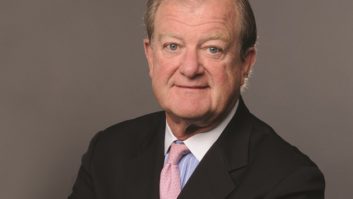We told you last week about a Heritage Foundation article regarding U.S. international broadcasting policy, in which author Author Helle Dalle wrote critically of past closures of shortwave sites.
The Broadcasting Board of Governors has issued a response to the article, sent to Radio World by Letitia King, director of the BBG Office of Public Affairs, and headlined “Radio Remains Prime Amidst Shortwave’s Decline.”
Here it is in full:
“Radio remains a prime medium for U.S. international broadcasting to reach audiences around the world. In fact, of the 171 million people reached weekly by Broadcasting Board of Governors broadcasts, 102 million are reached via radio,” King wrote.
“The Ofcom research cited by Helle Dale gives insight on the domestic market in the United Kingdom. In the case of international broadcasting, we are reaching diverse and dynamic marketplaces outside the U.K.
“The strategy of the BBG is to reach audiences on the media they prefer, when it is possible to do so. To determine media preferences, the BBG conducts a robust global research program. Changes in audience media use grow increasingly complex and demand that a one-size-fits-all shortwave solution must be replaced with individually tailored approaches to match the market,” she continued.
“Media usage worldwide has grown increasingly complex, and Dale’s wishes for a shortwave solution are not supported by the facts.
“Looking across three continents to key audiences we see that the Voice of America’s tailored approach results in the following audience reach:
– Nigeria remains almost exclusively a radio market for VOA, and our Hausa service presently reaches 36% of Hausa speakers weekly via a combination of shortwave and medium wave (AM) broadcasts.
– In Albania, VOA reaches more adults than any other international broadcaster in its target markets. TV is the dominant means of program delivery: VOA TV reaches 36% of Albanians weekly, while radio reaches 13% (almost entirely on FM), for a combined reach of 46% of Albanian adults.
– In Indonesia, VOA developed a multiple media (radio, TV, Internet and mobile) approach with an affiliate-based strategy, and now reaches 10% weekly on TV and 2% on radio (again mostly on FM), for a combined reach of 11%.
“The BBG and VOA are not abandoning shortwave; it is our audiences that are migrating to other media. For example, in the last five years Albanian use of shortwave dropped from 11% to 3%, and Indonesian use of shortwave declined from 7% to 1%. Even in Africa, long thought to be the last big market for shortwave, use has declined precipitously in most places. In Kenya, only 14% listened to shortwave in the previous week, while 90% listened to FM. Just this week, the BBC acknowledged similar shifts in audience behavior, citing a shortwave audience loss of 20 million people for their international broadcast.”












